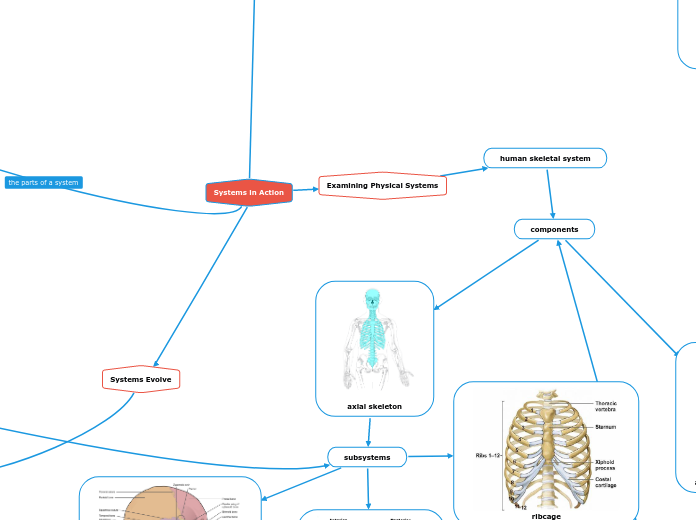arabera Nasr Ahmed 1 year ago
241
Systems in Action

arabera Nasr Ahmed 1 year ago
241

Honelako gehiago
axial skeleton
skull
to protect brain and support facial structure
severe trauma to this subsystem can cause a skull fracture
vertebrae
vertebrae can develop osteoporosis because of malnutrition and other reasons
(osteoporosis is a skeletal disease that weakens the vertebrae)
protects spinal cord and supports and allows movement to body
ribcage
trauma to the chest can cause ribs to break, which in turn causes sharp pains to inner organs
shields heart and lungs while providing structural stability to upper body
appendicular skeleton
subsystems
leg bones
to allow us to perform crucial functions such as moving, standing and performing other various activities
pelvic girdle
to support body weight and hold leg bones in place
shoulder girdle
allows the shoulder a large range of motion, and acts as an anchor to
arm bone
help arms withstand stress during exercise and other various activities
different instruments (and the players)
woodwind instruments
string instruments
percussion instruments
different types of hardware
servers
ethernet cables
modems
different biological subsystems
nervous system
controls the body
muscular system
allows movement
controls heartbeat
skeletal system
supports and protects vital organs
supports body form